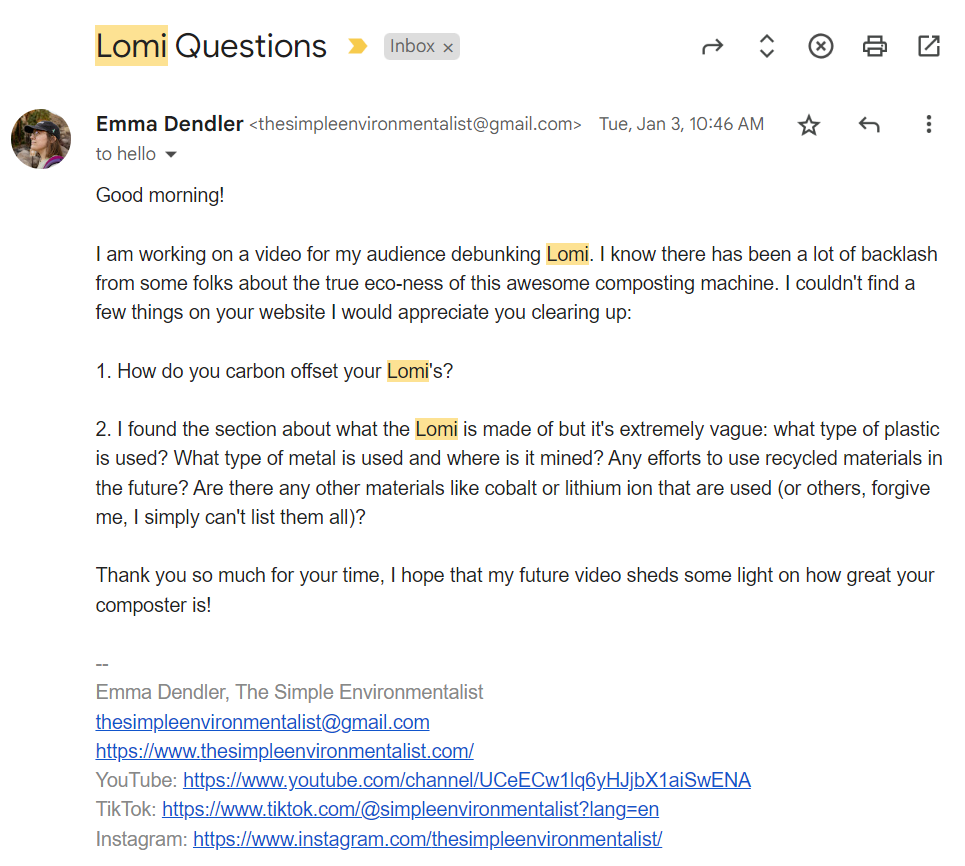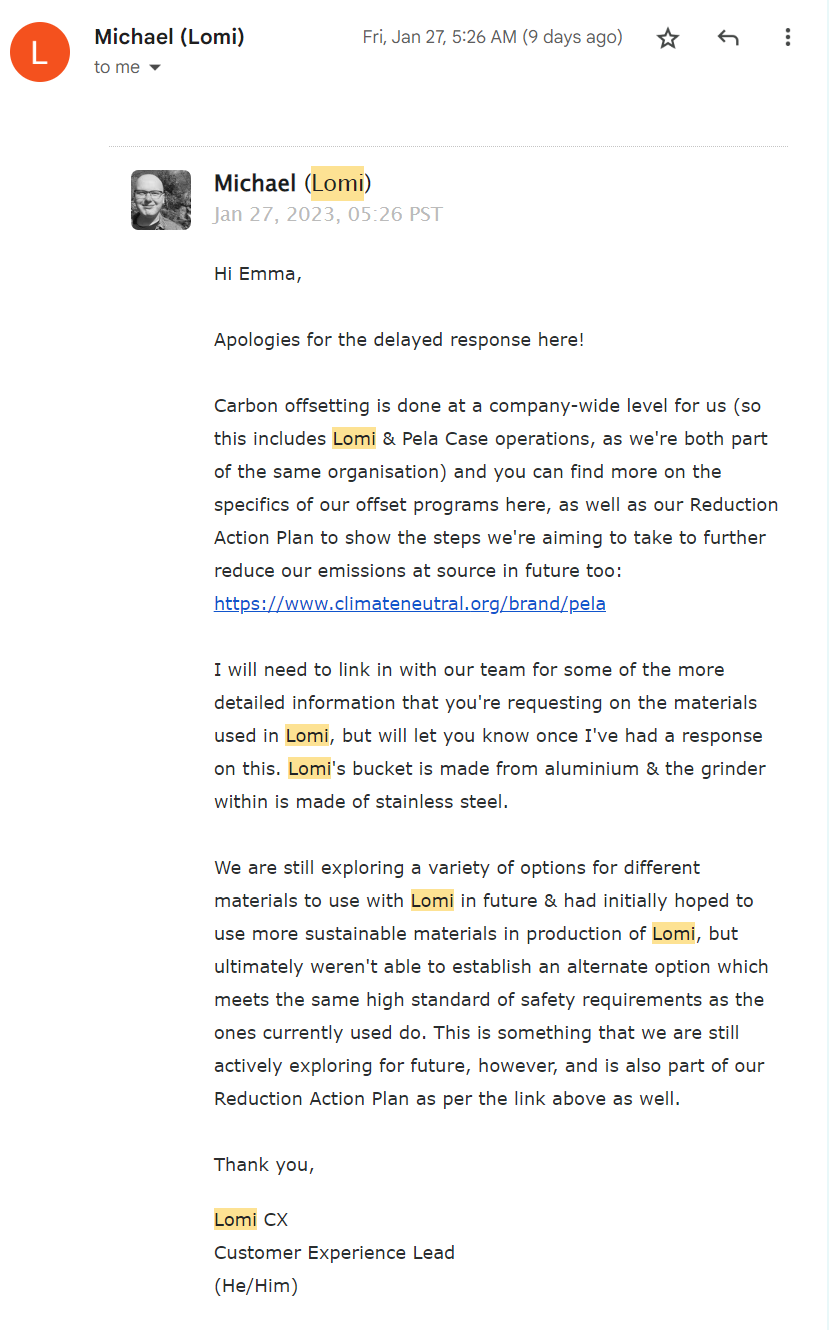Is the Lomi Composter Machine just Greenwashing?
Surely we've all heard about Lomi by now. If not, Lomi is a countertop composter machine made by Pela's new brand, Lomi. It is designed for people who don't have access to a yard or a curbside composting system, which is a lot of people. It's easy to use, relatively quiet and uses less energy than you think. But, is it greenwashing? Surely this giant piece of tech can't be good for the environment, but do the benefits of composting with a Lomi outweigh the costs it takes to make and run this machine?
Let's dive into it
Every day in the US, the equivalent of 1 pound of food per person is wasted which is about 30-40% of our food supply as well as accounting for nearly a quarter of all materials we throw away. Now, just to keep things clear, these numbers are not just what households are throwing away but also grocery stores and restaurants. That being said, the amount we throw away as individuals is still astronomical and equates to around $1500 being thrown away every year per family of four.
So, why is food waste a bad thing (except for the obvious)? You can check out my full food waste deep dive here, but in short, it is not only a huge waste of money and resources, but this food ending up in our landfills creates methane gas which is about 80x worse for the environment than CO2. Estimates show that we could cut out global greenhouse gas emissions by 6-8% if we quit wasting food. In the US alone, food waste is equivalent to 32.6 million cars. Now you see why Lomi wanted to solve this problem.
Humans have been composting for thousands of years. Composting is the process of turning organic matter back into the soil and can easily be done in any yard with little maintenance. The harder you work, the better your soil/fertilizer, but if you're like me, just trying to prevent food waste from going to landfill, you really can just set it and forget it.
But, with the growth of our urban areas, the destruction of green spaces, and many many people living without access to a yard, composting has become harder and harder. Not to mention, a majority of us rely on grocery stores, not our own gardens, for food, meaning that if we do compost, we don't even have a use for it.
Sure, some cities have curbside compost pick-up, as most of us do for trash and recycling. You may also be able to find a community garden or a local farm where you can take your compost, but again, this does not account for everyone. So, Lomi saw this opportunity to bring composting to everyone and make it easy, odor-free, and practical...except for the cost, but that is not the point of today's video. (is it a video, or just a blog?)
Now that we can see the benefits that composting has, let's talk about the resources it takes to make a Lomi. (period)
Lomi is made in a Lomi manufacturing facility in China and is C-Corp certified and carbon-neutral. So, that does mean they have to ship it to their US warehouses and then ship them again to you, and these machines are bulky and decently heavy. Lomi weighs 19-20 pounds or 9 kg. I did some rough calculations because it's hard to determine which mode of transport would be used. Here are some calculations from Tree-Nation based on 1 ton of freight, you can do with that what you will:
1 tonne of freight transported 1 km by a modern ship emits around 25 g of CO2.
1 tonne of freight transported 1 km by train emits 65 g of CO2.
1 tonne of freight transported 1 km by a modern lorry or truck emits 105 g of CO2.
1 tonne of freight transported 1 km by air cargo emits 500 g of CO2.
Lomi is made from recyclable plastic and metal. I don't like this claim because all-too-often plastic is not recyclable. Even if you recycle tech, they will most likely just strip the valuable metal and send the not-so-valuable plastics to landfills. I only hope wherever I recycle it when my Lomi bites the dust actually recycles the plastic. The good news is, Lomi has their own take-back program to ensure the most can be recycled as possible, but they don't have much info about this program on their website, so we can't see what they do and don't recycle from the old Lomis...if some have even been recycled yet since it is still such a new product. I find it frustrating that they didn't specify what types of metals are used, where they are mined, and if other precious materials like copper or lithium-ion are used. We simply don't know because they don't share on their website, so, I reached out to them.
I also wanted to ask them about their carbon offsetting, so I did. Their website simply states that their main brand, Pela, carbon offsets us as consumers. Though, even if they didn't do that, here are some stats from their website about how long it would take for Lomi to offset itself. Anyway, here is what I heard back from them about carbon offsetting.
It has since been 3 weeks since sending this last email with no replies STILL
What about actually running the Lomi?
Lomi uses 60kWh of energy for every 100 cycles you run in it. That is less energy usage than an energy star-approved refrigerator. Not to mention, 100 cycles in a Lomi means an average of 220 lbs of food waste diverted from landfill and 18 lbs of methane emissions avoided.
Okay, all these resources and energy usage aside, does the Lomi even work? Yes!
Does it work as actual nutrient-rich soil? Yes and no
There are three settings and they all work differently and produce different levels of "soil." I say that in quotes because some are broken down so quickly that they don't really turn into viable soil.
Eco-express mode works for general cooked or raw food and is the fastest result and uses the least energy. This mode takes about 3-5 hours and this can be added to your compost bin, your next Lomi cycle, existing soil, or thrown away (we will get to that in a minute).
Lomi approved mode is meant not only for food waste but bioplastics and Lomi approved packaging. They recommend a ratio of 1:10 bioplastics to food waste and to use a LomiPod (a blend of probiotics to improve biodegradation, smell, and quality)when running this mode. The same goes for this one: this can be added to your compost bin, your next Lomi cycle, existing soil, or thrown away.
Grow mode is meant for ONLY fruits and vegetables, not cooked foods, meats, or bioplastics. This uses the lowest heat setting to preserve microorganisms which results in nutrient-rich dirt. Use a LomiPod with this one as well for best results (though, I have never used this and have had no issues). This cycle takes 16-20 hours and is the best setting if you need soil/compost for your plants.
In summary, you can theoretically add any of these to your soil/plants but the best result will yield from the Grow Mode.
Let's backtrack...I mentioned throwing away the Lomi dirt...why?
Not everyone has a compost bin, a commercial compost pick-up, or plants to put the soil in. So, the landfill is the next (and only) option for those people. But, doesn't food waste in landfills cause methane which is worse than CO2? We've all heard this, right? Yes, food waste does do this, but this is not food waste anymore, it's broken down. And, once the food is broken down, little to no methane will be created by sending it to the landfill. You can check out my full deep dive into food waste and why composting does NOT create methane here.
Is this the best option? Probably not, but once again, we need to look at why Lomi was created. Lomi was created to help people who don't have access to a yard or a garden or a compost bin to reduce their food waste and therefore methane emissions. And this goal is accomplished even if you throw the dirt away.
I know I'm beating a dead horse, but if you have commercial compost or a yard or a community garden or your own garden, you do NOT need a Lomi, and a Lomi for you would be a wasteful experience. This is designed for everyone else who doesn't have those options, myself included. By the time you read this post, I will be just about to move into our RV full-time for 6 months meaning I won't have curbside compost, a yard, or anything like that, so the Lomi is designed for my new life situation.
So, stay tuned for my thoughts after using a Lomi for 6 months straight, not traditional composting, to see how I like it and if I would still recommend it after all that time.
So, what do I think?
I don't think Lomi is greenwashing. I think people throw that term around willy-nilly. Greenwashing is purposefully trying to lie to us about being eco when in reality, it's not. Is Lomi the best of the best for composting solutions? No. That's simple. Backyard composting and curbside pickup (or using services like Share Waste to find a place near you if you don't have either of those options) are the best. They require way fewer resources and energy.
That being said, I think Lomi is doing exactly what they say on their website. They are open about their shipping across the world, they made it very energy efficient, and at the end of the day, food waste is a massive problem we are dealing with. Not only for methane but also for landfill space. Check out this video to learn more about how long we have until our landfills run out and again, and watch my full food waste deep dive. I think any move to reduce food waste is a good one.
Is Lomi perfect? Far from it, but I simply do not think it is greenwashing. I would love to hear your thoughts below on this as well.
And, just so no one misconstrues what I am saying, I am not asking everyone to go out and buy a Lomi. I think it is a last-case scenario. There are much easier, cheaper, and closer options for composting than buying an expensive machine that, very obviously, has a carbon footprint of its own. You can check out my video here about how to build yourself a compost bin for free and by using items destined for the landfill or you can hop on sites like OfferUp and Facebook Marketplace to find a secondhand bin. And, don't forget to check out sites like Share Waste to find someone who composts near you if you can't compost yourself!
Thanks so much for reading along, I appreciate your time. As always, remember that your small actions make a big impact
Emma












